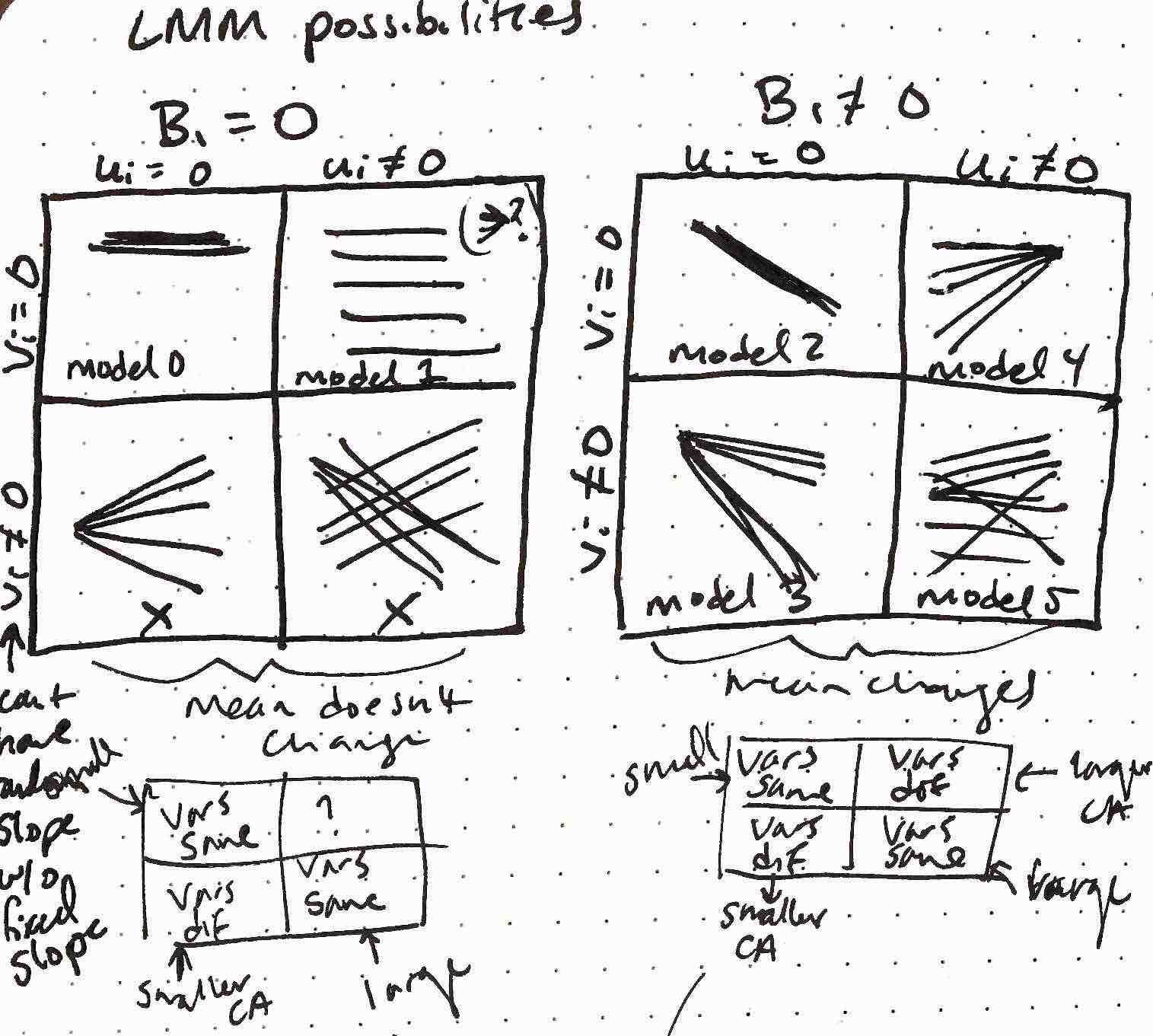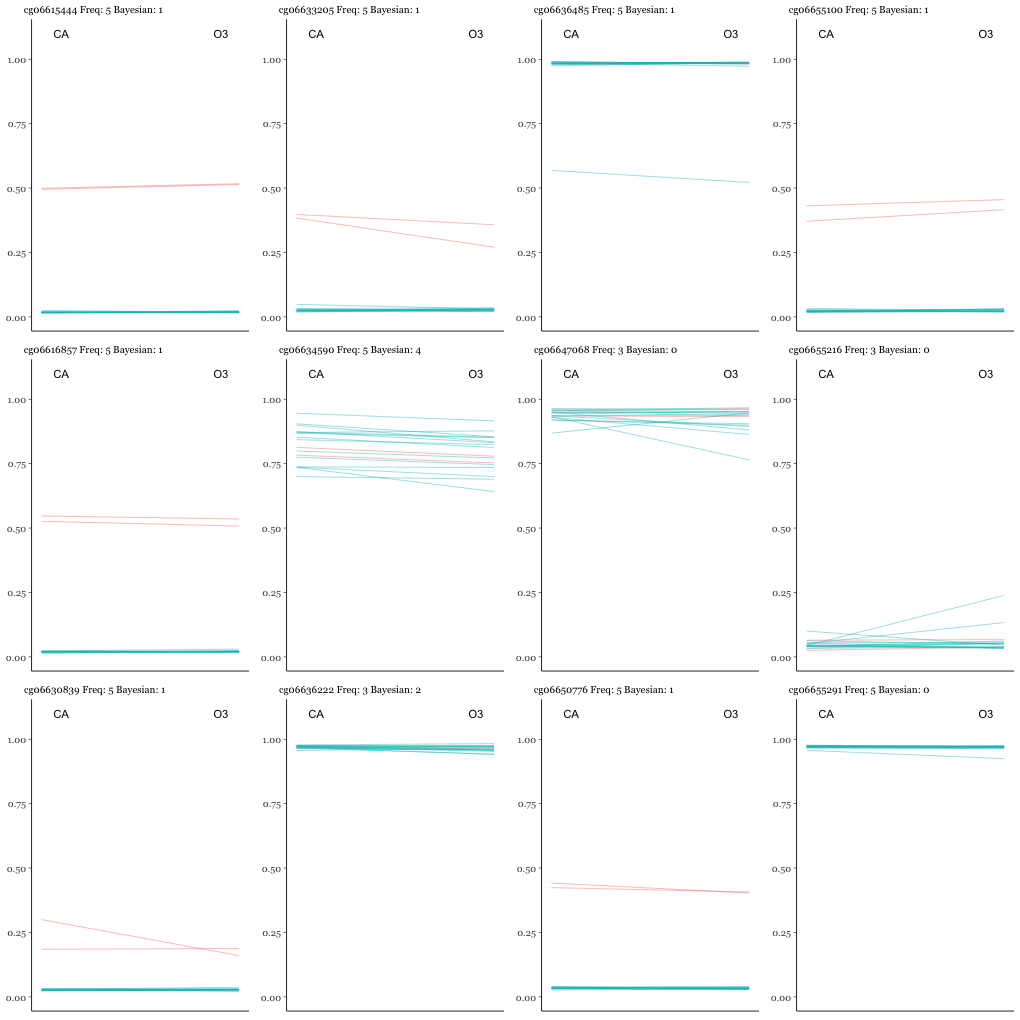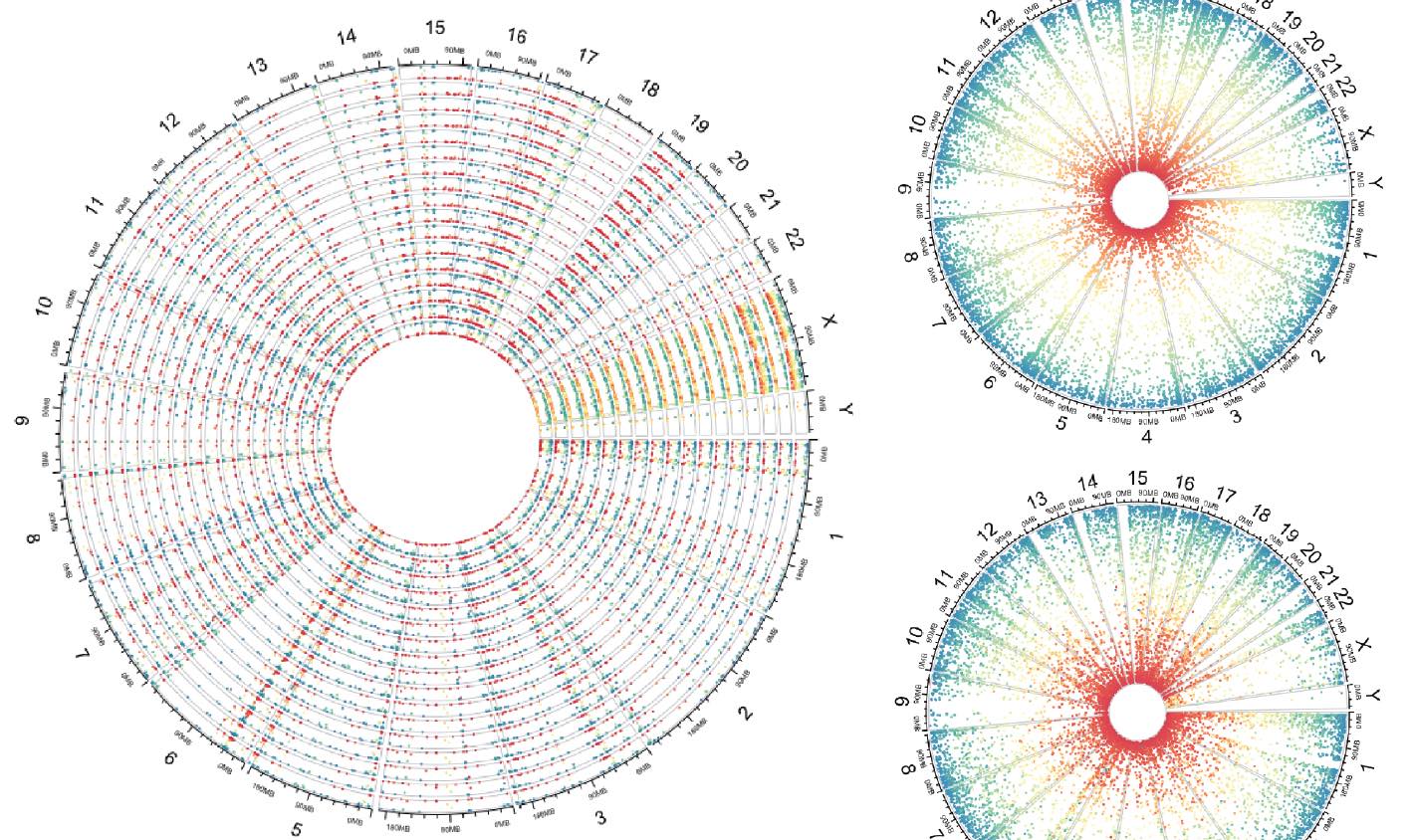
Epigenomics
A big data problem and a small data problem

Epigenomics
A big data problem and a small data problem
Don Rubin's lab at Harvard specializes in investigating causal effects.
We worked together to explore the individual causal effects of ozone on DNA methylation
Visualize 1,000,000 data points for each of the 17 participants in the study
Epigenetics has become a popular field in recent years since it allows us to study changes in one's gene expression in response to their environment. Most epigenomics papers only explore the average effect of an environmental factor on a population. We are exploring how to investigate individual causal effects of ozone exposure on DNA methylation, since people can start at different methylation levels, and also respond differently to ozone exposure. This is a hard problem because of the large dataset, but our interest in individual causal effects turns it into a small data problem as well.
I explored the change in the methylation level of 500,000 different sites in the DNA in response to ozone exposure. The heatmap shows the correlation between the partipant's responses. One interesting thing is that participant 1 and 3, whether in clean air or ozone are more similar to each other than anyone else. These 2 are the only women in the study! After preliminary exploration I made a plan for more interesting visualizations to make next.
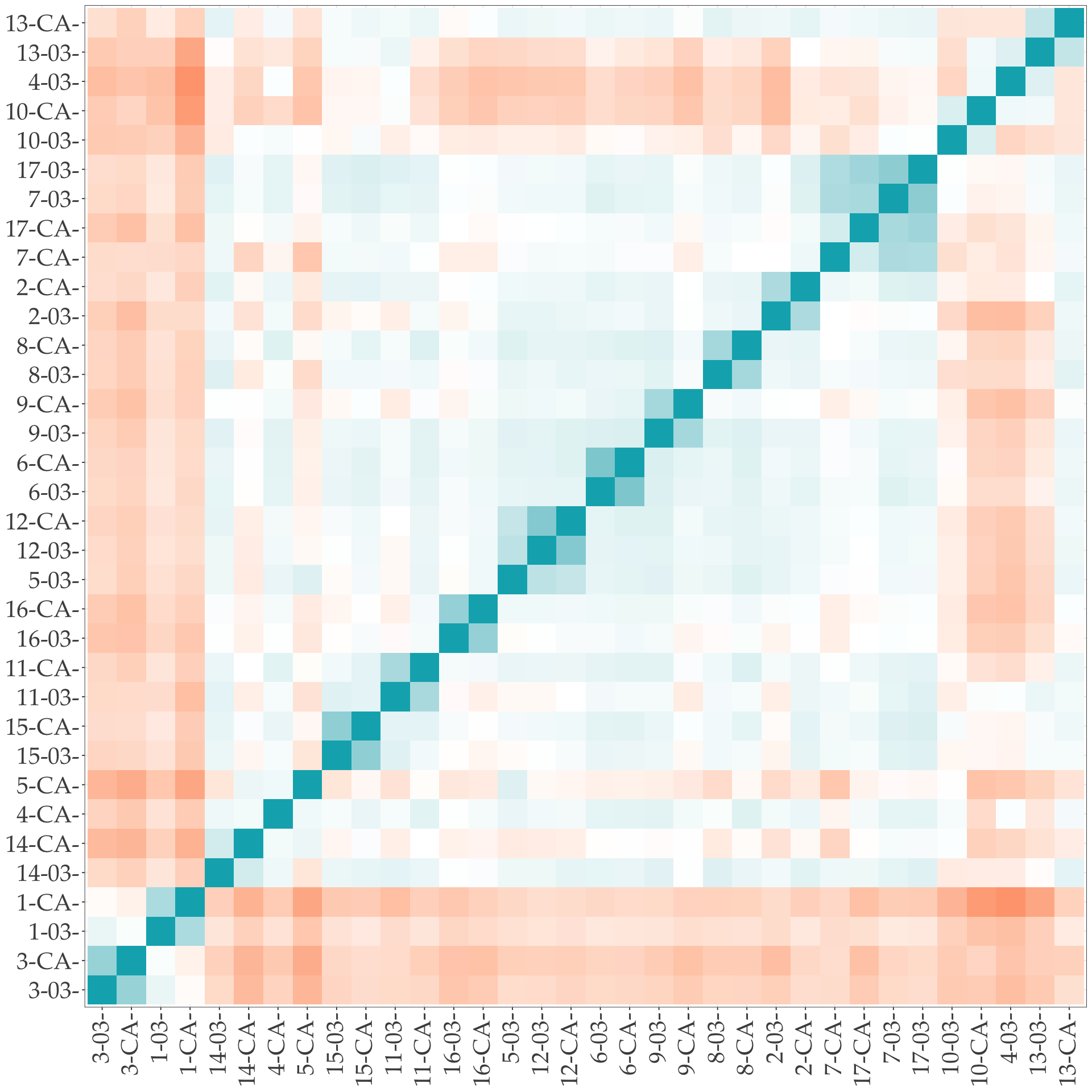
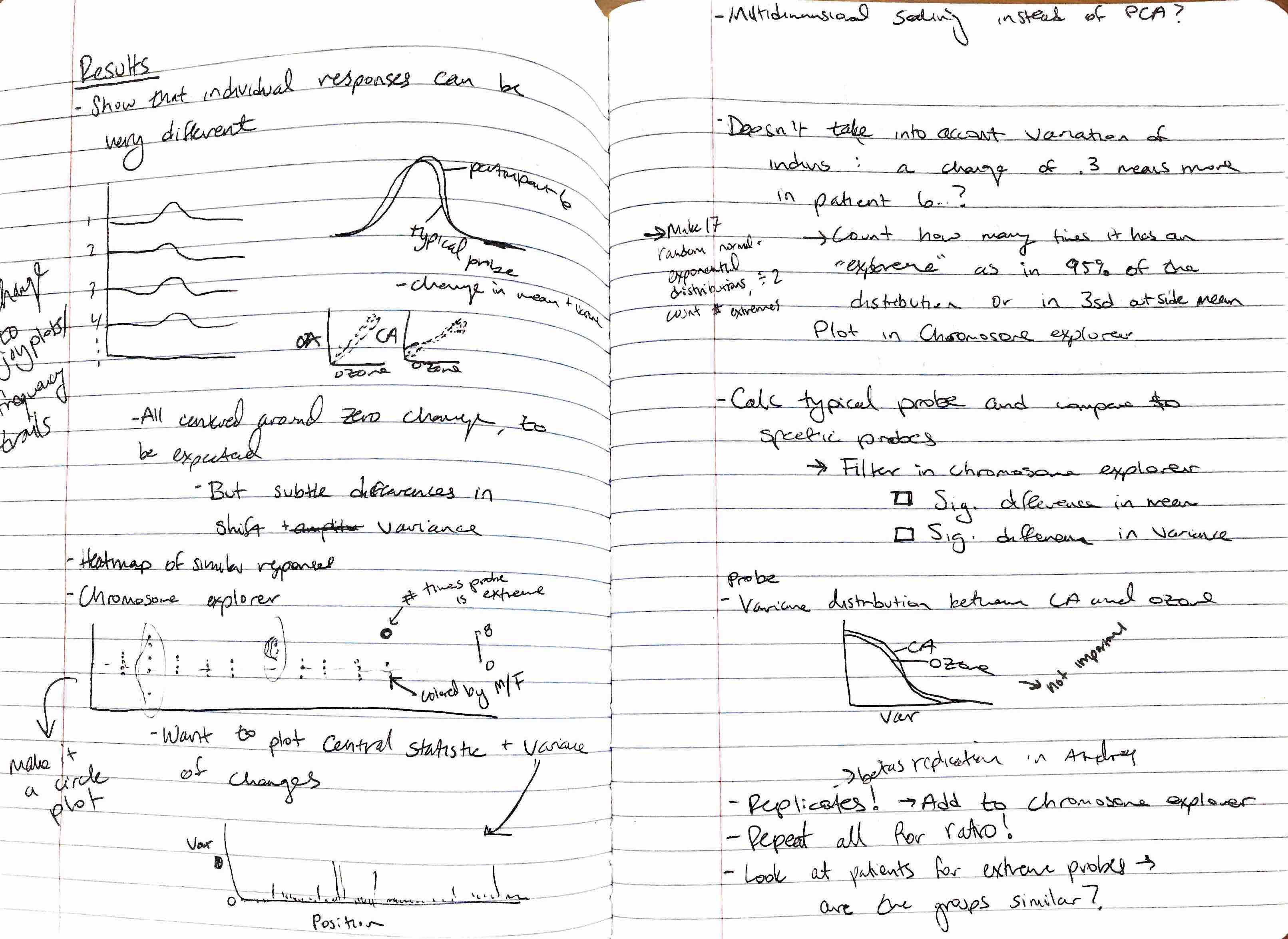
The next step was to make more focused visualizations surrounding the differents between participants. We can see that most sites have a very small change in methylation in all of the participants. Participant 6 has even more unchanged methylation sites than the rest of the participants, as shown by the height of the ridge plot and the tight cluster of points in the scatterplot. One interesting thing in the participant 5's scatterplot is that some moderately methylated sites were brought up to more completely methylated sites after ozone exposure.
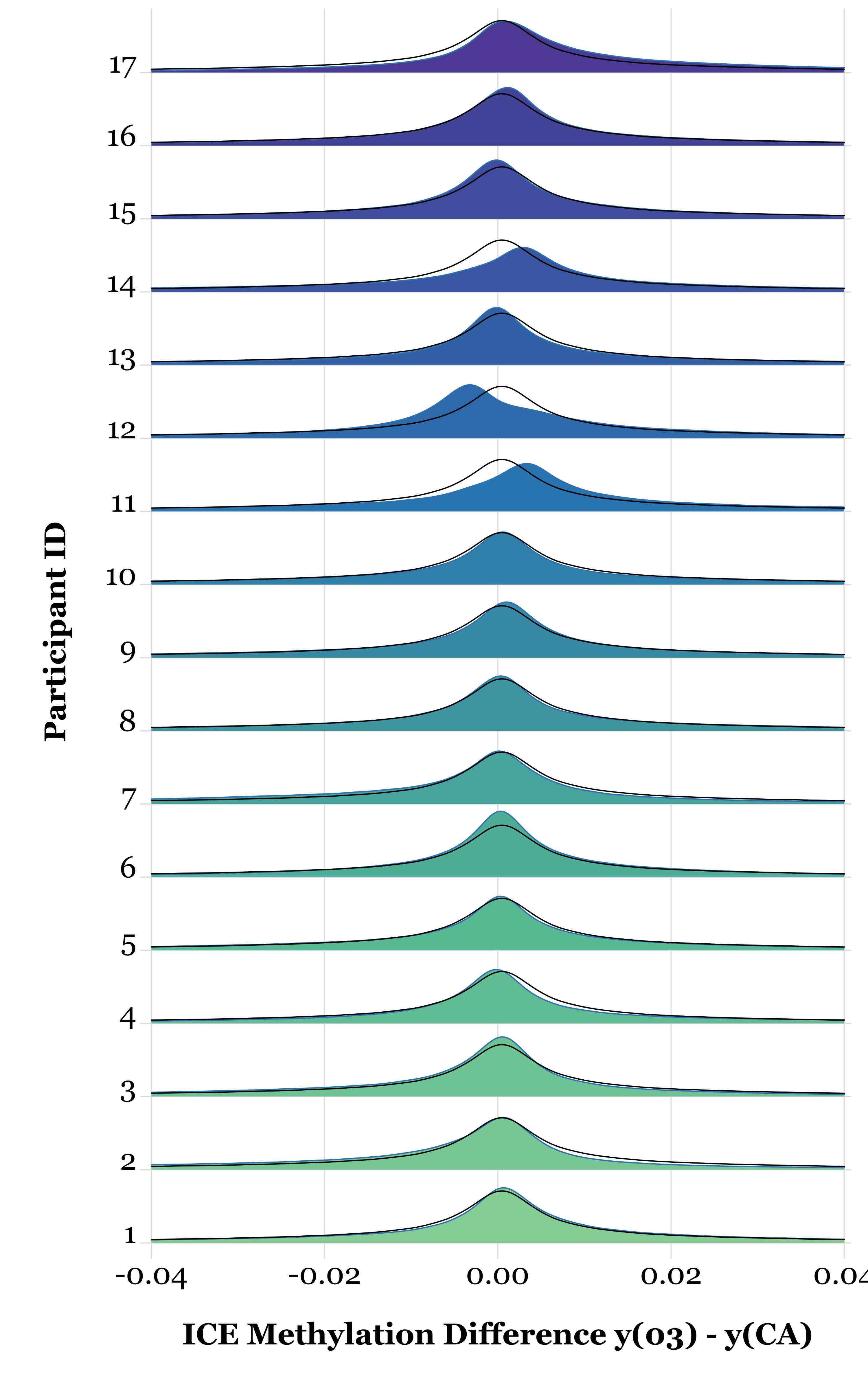
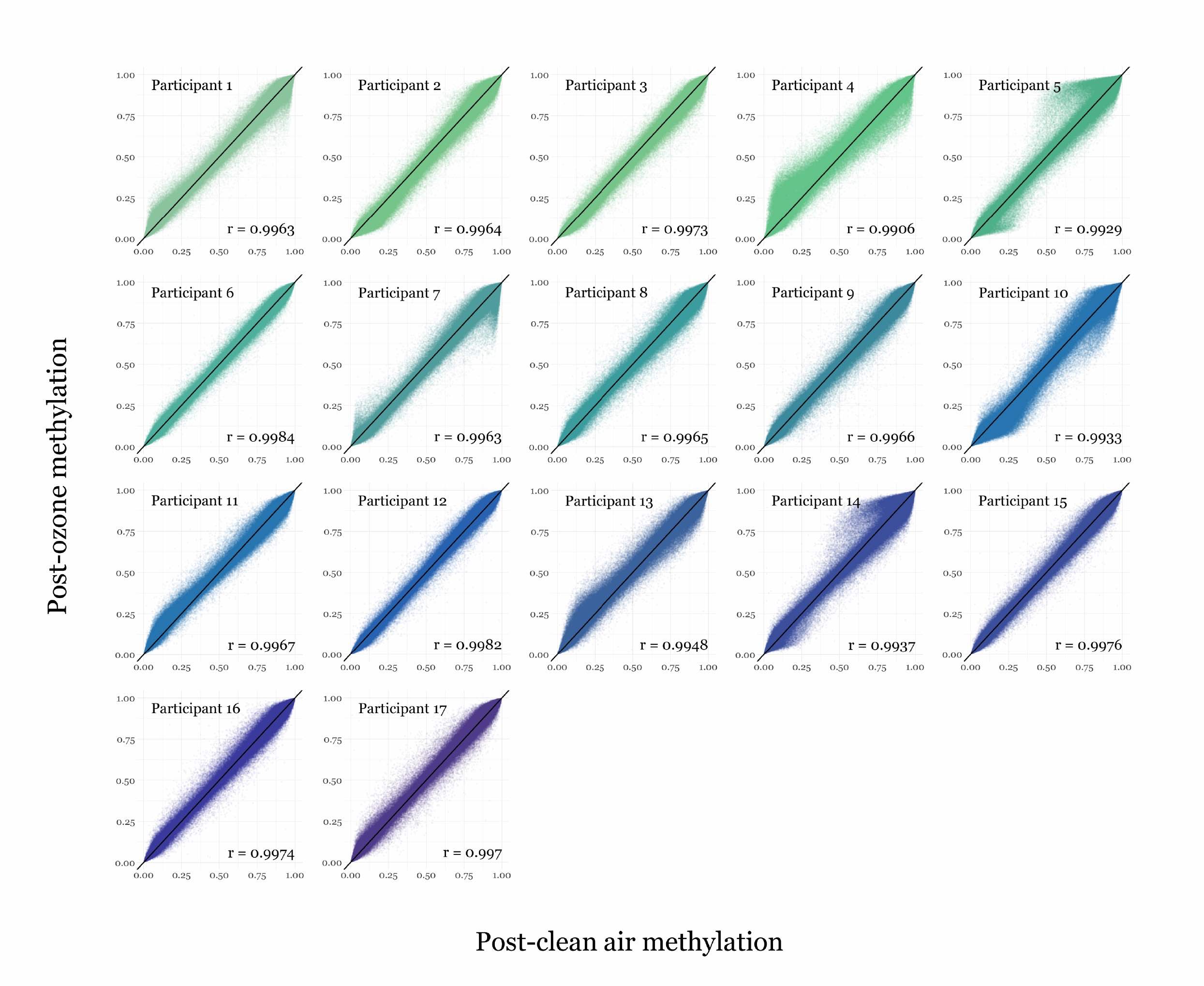
These circles are useless. Pretty, but useless. For now at least. We have a plan to make them useful, but these are just interesting looking and I thought I should explain that given that I put these circles on my home page. I learned to use a new R package, Circos, that uses an entirely different notation than R itself. I was excited I was able to make these!
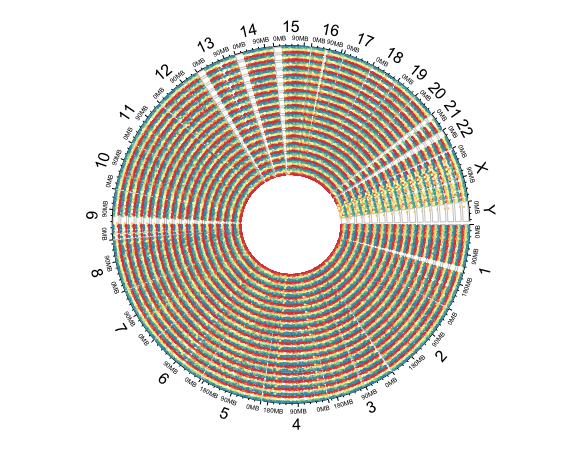
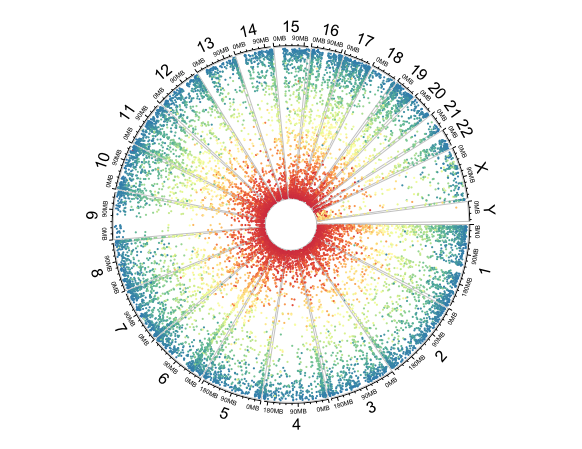
After all this exploration, we found the new question we will be answering. We are aiming to classify the patterns of before and after responses between participants. If we find a statistically sound way to do this, it could be used in all sorts of studies. In epigenomic studies, it will be useful to identify genes were interesting things are happening. Most methylation sites have the same methylation level beteen all the participants in both treatment and control situations. Any other pattern be worth investigating.
